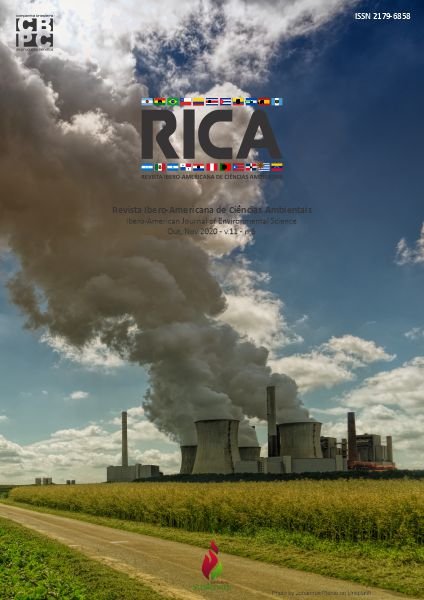Thermal efficiency of the flat solar collector during drying coffee (Coffea arabica L.) under different climate conditions
DOI:
https://doi.org/10.6008/CBPC2179-6858.2020.006.0032Keywords:
Hybrid solar-electric dryer, Drying parameters, Pluviometric index, Mass lossAbstract
The drying stage of the coffee must be efficient, aiming at its beverage quality and the consequent competitiveness of the grain in the market. Among the forms of drying, it is possible to adopt a solar dryer in order to circumvent disadvantages arising from conventional methods. Thus, the objective was to evaluate the thermal efficiency of the flat solar collector (FSC) coupled to the hybrid electric solar dryer (HESD) in sunny periods (SP) and with incidence of rain (RP). The drying of Arabica coffee (yellow Catuaí) was carried out in the HESD composed of the flat solar collector, drying chamber and air exhaust system powered by conventional or photovoltaic electric energy. The effective period of solar drying was 51 h with intermittence of 15 h (night time). During drying, the parameters of temperature, relative humidity (RH), solar irradiation and pluviometric index were monitored. The fruits separated in lots of pulped and natural coffee were placed in trays containing removable baskets inside the drying chamber. The average temperature and RH of the ambient air was 23.1 oC and 76.0%, respectively, being in the SP of 26.4 oC and 62.0% and RP of 19.8 oC and 89.9%. The average solar irradiation and pluviometric index were 210.9 W m-2 and 10.4 mm, respectively, throughout the effective period of solar drying. The highest temperature with the respective average RH reached at the exit of the FSC occurred on the first day of the sunny period, being 41.9 oC and 52.1%. Higher temperature and lower relative humidity of the drying air are observed at the outlet when compared to the entry of the flat solar collector, regardless of the climatic conditions of the drying period. The maximum average thermal efficiency obtained from the FSC was 71.6, 58.6 and 21.3% in the SP, RP and global, respectively. The pulped and natural fruit mass decreased by 27.4 and 34.2%, respectively, due to water loss. Thus, it can be concluded that the HESD was efficient in the solar drying of coffee fruits, regardless of the lot and climatic conditions.
Downloads
Downloads
Published
Issue
Section
License
Copyright (c) 2020 Ibero-American Journal of Environmental Sciences

This work is licensed under a Creative Commons Attribution-NonCommercial-NoDerivatives 4.0 International License.
The CBPC - Companhia Brasileira de Produção Científica (Brazil CNPJ: 11.221.422/0001-03) the material rights of the published works. The rights relate to the publication of the work anywhere in the world, including rights to renewals, expansions and dissemination of the contribution, as well as other subsidiary rights. All electronically published works may subsequently be published in printed collections under the coordination of this company and / or its partners. The authors preserve the copyright, but are not allowed to publish the contribution in another medium, printed or digital, in Portuguese or in translation.









